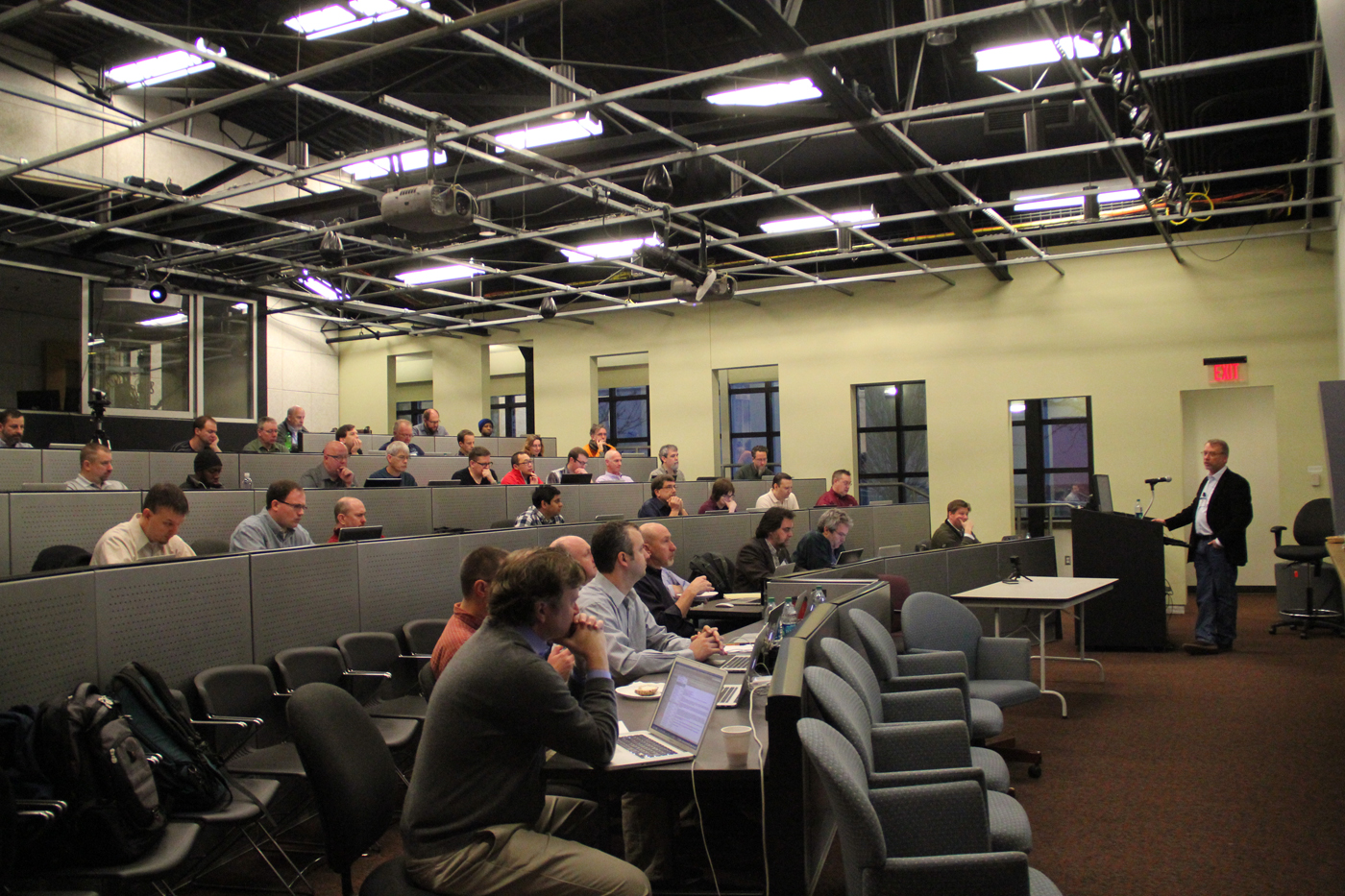Program

photo courtesy of OARnet
Information on Workshop content:
The Science DMZ is a portion of the network, built at or near the campus or laboratory's local network perimeter. It's designed such that the equipment, configuration, and security policies are optimized for high-performance scientific applications rather than for general-purpose business systems or “enterprise” computing. Developed by ESnet engineers, the Science DMZ model addresses common network performance problems encountered at research institutions by creating an environment that is tailored to the needs of high performance science applications.
The workshop will describe this architectural paradigm in detail, and share common ways it can be implemented on a campus, laboratory, or regional network. Discussion will focus on network devices that are capable of handling scientific use cases, along with sensible ways to transform campus security policies.
Software Defined Networking (SDN) represents a major shift in the field of networking. By giving campus, lab, and research networks the ability to develop and deploy their own customized network capabilities, SDN opens up the network — allowing networks to be "programmed" by network operators and researchers rather than network equipment manufacturers.
The Internet2 Advanced Layer2 Service was built by Internet2 and the GlobalNOC as a nationwide, SDN-based high-speed infrastructure for research and education. Beginning with its Innovative Application Award, Internet2 is also developing network apps that will require SDN on campuses.
The workshop will provide network engineers on campuses and labs with the foundation they need to plan and operate SDN capabilities on their networks. The GlobalNOC will share concrete lessons about designing, deploying, and operating SDN networks, touching on:
1. SDN hardware and software selection
2. Architectural models for interconnecting SDN and traditional networks
3. The building blocks of OpenFlow-based SDN
4. Testing methods for deploying SDN applications
5. Troubleshooting lessons for SDN
The Internet2 Advanced Layer2 Service was built by Internet2 and the GlobalNOC as a nationwide, SDN-based high-speed infrastructure for research and education. Beginning with its Innovative Application Award, Internet2 is also developing network apps that will require SDN on campuses.
The workshop will provide network engineers on campuses and labs with the foundation they need to plan and operate SDN capabilities on their networks. The GlobalNOC will share concrete lessons about designing, deploying, and operating SDN networks, touching on:
1. SDN hardware and software selection
2. Architectural models for interconnecting SDN and traditional networks
3. The building blocks of OpenFlow-based SDN
4. Testing methods for deploying SDN applications
5. Troubleshooting lessons for SDN
perfSONAR is an open source software suite that provides robust network performance monitoring, making it easier to solve end-to-end performance problems on paths crossing several network domains. It contains a set of services that deliver performance measurements in a federated environment. perfSONAR has been developed through an international collaboration led by ESnet, GÉANT, Internet2, and RNP.
The workshop will introduce the concept of network performance, and the tools that are required to monitor this locally, as well as end-to-end. Attendees will learn how to install perfSONAR for their own use, and how to integrate their testing needs with that of the community as a whole. Topics will include choosing monitoring hardware, designing tests, and integrating results into an operational context.
The computer systems used for wide area data transfers perform far better if they are purpose-built and dedicated to the function of wide area data transfer — instead of general purpose machines affiliated with the storage or processing roles of the computing infrastructure. These so-called “Data Transfer Nodes” (DTNs) are high-quality components, configured specifically for wide area data transfer.
The workshop will introduce the concept of a DTN to attendees, recommend ways it can be constructed and integrated into their Science DMZ environment, and show how workflow efficiency can increase through the adoption of high performance applications for bulk data movement.